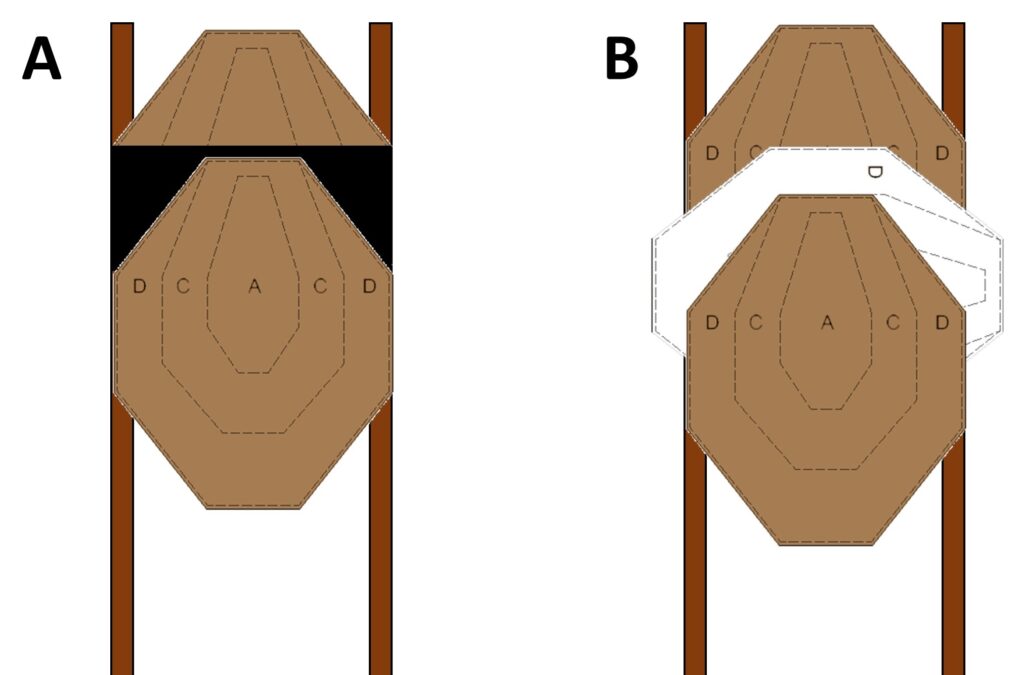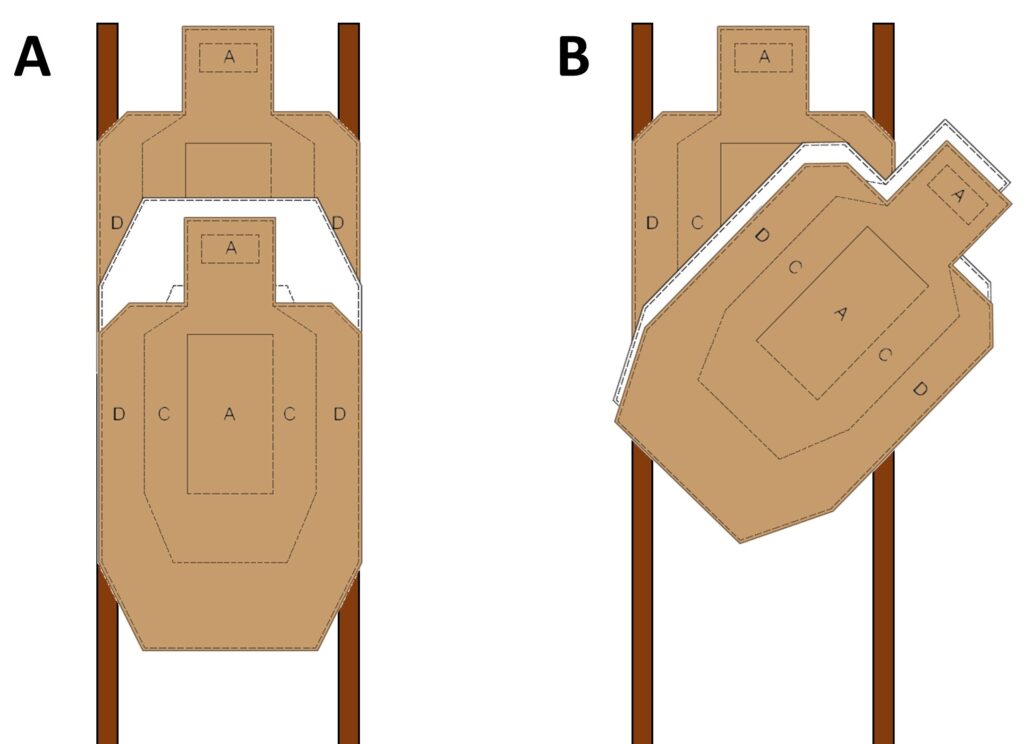The 2024 rulebooks release today (February 29th) and that means we have new rules to discuss! If you look at the USPSA Competition Rules you will see a new rule about not overlapping scoring targets directly on top of each other. Let’s look at the new rule, discuss why it was added, and some example target layouts.
The new rule is 4.2.6: For Virginia Count and Fixed Time courses of fire, overlapping targets must not present a situation where a single bullet can create two scoring hits thus creating an extra hit penalty. Targets must be separated with hardcover or no-shoot.
The reason this rule was added was to prevent stage designers from inadvertently creating a situation where a competitor may get an edge hit (touches non-scoring border perforation) on one scoring target that is overlapping another scoring target and getting a hit on both targets. In Virginia Count and Fixed Time scoring, where additional hits on scoring targets are penalized, that lucky 2-fer hit will usually result in an extra hit penalty on one of the targets. You can still directly overlap scoring targets on Comstock scored stages if you choose.
So how do you make sure your Virginia Count and Fixed Time stages with overlapping targets comply with this new rule? You just need to separate the overlapping targets with some hardcover or a no-shoot. Here is an example with some IPSC targets. Array A has hardcover on the back target and array B uses a horizontal no-shoot.

The above arrays could also be built with USPSA targets. And here are some USPSA target examples that would also work for IPSC targets. In array A, the no-shoot is inverted to help create a larger separation between the two targets and in array B the no-shoot is in the same orientation as the top scoring target, but offset a bit.

Basically be creative but always remember to comply with the minimum A-zone visibility requirements listed in Appendix B1. For full-size USPSA targets, the entire upper A-zone or 25% of the lower A-zone must be visible. For full-size IPSC targets, it is 25% of the A-zone. For half-size targets it’s 50% of the A-zone on IPSC and 50% of the lower A-zone on USPSA targets.